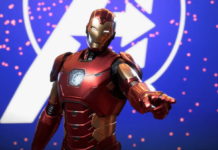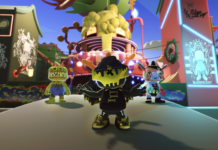Few games were mocked for their linearity as harshly as Final Fantasy XIII. It’s sequel, XIII-2, gave players room to breathe and expanded the gameplay in some really fun ways, but faltered when it came time to tell a story. Will Lightning Returns address the problems the series has had so far? I can’t say for sure, but I will say this third game is even more different than the second one was.
The first thing to notice is the open world, which you explore as Lightning and Lightning alone. Yuji Abe, the Game Design Director, was on hand to explain the concept behind focusing on a singular hero this time around: “When developing this game, the keyword we used was ‘world-driven.’ The player is the focal point, but one singular point, and then you have the world around you that’s moving and driving how the player interacts.”
The result is a massive world with main quests and side quests that can be tackled in different orders. The world is divided into four different regions, and interestingly, each region was developed by a different small team within the studio. “There are separate teams that worked on each of the continents,” Abe said. “The content that was developed and the typography that was developed for each area is quality controlled by that team.”

While the goal was to divide and conquer, splitting up the team so that they could complete the game in a short time and keep spirits high, the result was four distinct regions. The region I saw in the demo, the Wildlands, was created by the studio’s youngest team, for example. It will be very interesting to see how that is reflected in the final game, though I was told by Abe and producer Yoshinori Kitase that the player will be able to seamlessly run through each region and explore.
In my demo, I wandered off a bit to see how the game compares to something like Skyrim. That attitude left me confused, if not a bit disappointed. Of course, I was playing a demo and only had a couple quests available to me, but one of my favorite aspects of open world games is to just wander and see what I can find in my travels. What I found were a lot of dead ends and big empty areas with some enemies and items.
My gut reaction is that while Lightning Returns is open-ended, it isn’t that kind of game. That said, Kitase and Abe told me that while an early version of the game had about 20 hours of gameplay, the added sidequests have put that number closer to 50. It’s just a question of whether those quests will be exciting or not.

What was exciting was the games new combat system. Abe told me that one of their goals this time around was to make the combat system more direct and understandable. The Paradigm shift system was too abstract and confused some people, so while they haven’t thrown out the concept, they have given everything more apparent feedback. Now, instead of shifting paradigms on three different characters, you’re changing costumes on Lightning.
Each costume is highly customizable, with slots for enhancements and weapons, types of attacks, and the ability to change the color on different parts. In battle, you treat each costume like a paradigm. One might be good for defense, another for offense, but they each have their own ATB gauges to encourage players to jump to one costume while another recharges.
Although the game has an ATB gauge, the combat system isn't menu-driven. Each costume has four commands on the face buttons, with one button (at least in the demo) generally assigned to some kind of block or dodge. Attacks are performed by pressing or holding the button, while blocks or dodges have bonuses if you time them perfectly. You can even juggle enemies into the air by combining attacks, making for a strategic, but far more action-oriented battle system than the series has had.

In addition, players can spend Energy Points, or EP, to turn the tide of battle or gain advantages in quests. In one fight where I was hopelessly outclassed, I was able to spend some EP, go into Overclock, and deny my enemy a chance to attack for a nice advantage. EP regenerates over time, and it can also help you in quests, allowing you to slow the passage of time for a bit to finish a mission.
One of the more confusing aspects of FFXIII-2 was its time travel, but it seems some version of it has made a return here. The system is reminiscent of Majora’s Mask or Dead Rising. Players start out with seven days to save the world, and by completing quests they can add to that time. Run out of time and your main quest progress is reset to zero. Find yourself out of time to finish a quest and you can spend some EP for a time extension. Again, it sounds a lot like Dead Rising, and that isn't a bad thing in my eyes.
Whether you succeed or fail, the developers assured me that this is the end of the story. There won’t be any post-game story DLC, and the conclusion will be a final one. The only DLC possibilities Kitase and Abe were willing to discuss was the possibility for costumes from other Final Fantasy games to make an appearance.
Overall, I get the sense that Lightning Returns: Final Fantasy XIII is going to be a fascinating game with some flaws, much like the previous games. Still, XIII-2 improved on XIII in a lot of ways, so I hope this one follows suit. What I’ve seen so far has a lot of promise, but I also worry that all the side questing and open world exploration won’t come together into an entertaining package. Either way, at least Square Enix is trying something new.
Enjoy random thoughts about the latest games, the Sega Saturn, or the occasional movie review? Follow me @JoeDonuts!










